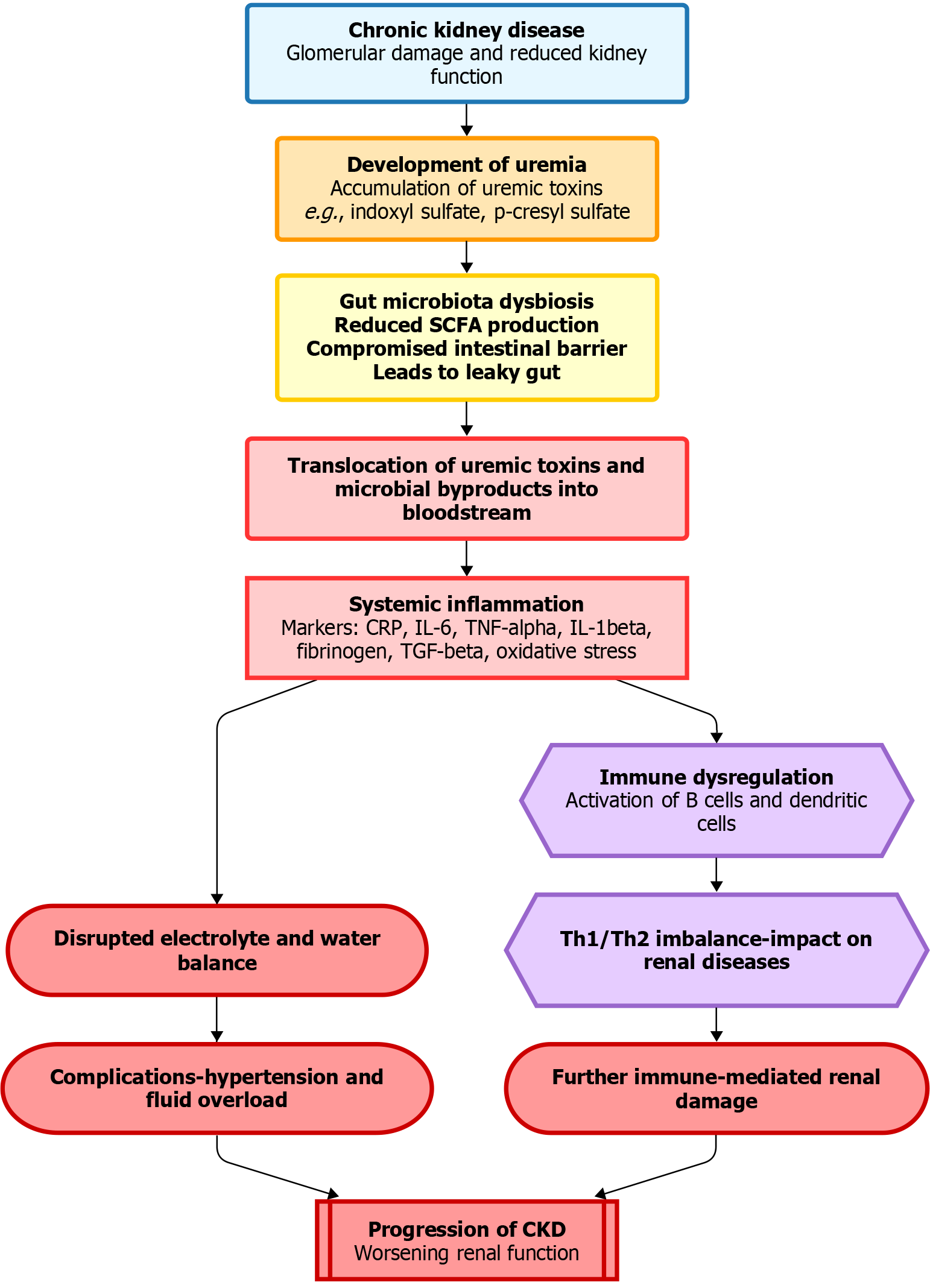Copyright
©The Author(s) 2025.
World J Nephrol. Mar 25, 2025; 14(1): 101515
Published online Mar 25, 2025. doi: 10.5527/wjn.v14.i1.101515
Published online Mar 25, 2025. doi: 10.5527/wjn.v14.i1.101515
Figure 1 Diagrammatic illustration of the progression of chronic kidney disease under uraemic conditions.
Chronic kidney disease, characterized by glomerular damage and impaired renal function, can lead to the development of uremia due to the accumulation of uremic toxins such as indoxyl sulfate and p-cresyl sulfate. This accumulation may cause gut dysbiosis and decreased production of short chain fatty acids. The translocation of these uremic toxins into the bloodstream can trigger systemic inflammation and immune system dysregulation, resulting in complications such as fluid overload and disrupted electrolyte balances. These factors may further exacerbate kidney damage and contribute to the progression of chronic kidney disease to end-stage renal disease. SCFA: Short chain fatty acid; CRP: C-reactive protein; IL: Interleukin; TNF: Tumor necrosis factor; TGF: Transforming growth factor; Th1: Type-1 helper; Th2: Type-1 helper; CKD: Chronic kidney disease.
- Citation: Chafekar D. Optimizing chronic kidney disease management: The potential of a multi-strain probiotic formulation. World J Nephrol 2025; 14(1): 101515
- URL: https://www.wjgnet.com/2220-6124/full/v14/i1/101515.htm
- DOI: https://dx.doi.org/10.5527/wjn.v14.i1.101515













